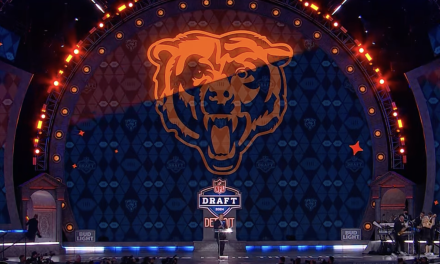Tokitae, also known as Lolita or Sk’aliCh’elh-tenaut, the last surviving southern resident killer whale in captivity, died at Miami Seaquarium.
The Miami Seaquarium has long been caught up in controversies surrounding allegations of animal cruelty and inhumane treatment. Calls for its closure have intensified, especially after drone footage vividly depicted the deteriorating conditions of Lolita’s tank, marked by discoloration and neglect.

What is even more outrageous is that a dolphin named Li’i was left in total isolation in the same tank as Lolita. The same dirty, decrepit tank all alone. Advocates implore as they did for Lolita that Li’i be released immediately and rescued. Many fear Li’i will have the exact same unnecessary fate as Lolita. Not only does Li’i need to be saved and brought to safety, but the Miami Seaquarium needs to be shut down and held accountable for its inhuman animal practices.
Tokitae: The Tale of Lolita or Sk’aliCh’elh-tenaut
Tokitae, more popularly known as Lolita or by her Indigenous name, Sk’aliCh’elh-tenaut, is a female orca who has lived most of her life in captivity, becoming an emblematic figure in the ongoing battle between marine park establishments and animal rights advocates. Her story is a poignant reminder of the consequences faced by wild animals forced into confinement for the sake of human entertainment.
Born in the Pacific Northwest waters, Tokitae was among many orcas captured during the 1960s and 1970s, a period marked by a booming demand for these majestic marine mammals by aquariums and marine parks. In 1970, at just four years old, she was forcibly separated from her family pod and sold to Miami Seaquarium, where she was rechristened “Lolita.” This transition from the ocean’s vastness to the restricted confines of a tank had profound implications for her physical and mental well-being.
Over the years, as awareness about the ethical implications of keeping orcas in captivity grew, Lolita’s plight gained attention. Advocates pointed out the numerous inadequacies of her living conditions, such as her undersized tank and lack of companionship, especially after her tank-mate, Hugo, died. The Lummi Nation, an Indigenous tribe of the Pacific Northwest, has been particularly vocal about her situation, referring to her by the name Sk’aliCh’elh-tenaut, emphasizing her cultural and spiritual significance to their community.
Lolita, or Sk’aliCh’elh-tenaut, is a poignant symbol of the broader movement against animal captivity. Her story underscores the need for a more compassionate approach to marine life and the importance of respecting the intricate bond between animals and their natural habitats.
The Dark Side of Miami Seaquarium and the Need for Change
Miami Seaquarium is a popular attraction that draws countless visitors every year, lured by the promise of witnessing the mesmerizing beauty of marine life. However, behind the glossy veneer of entertaining aquatic performances lies a trail of controversies, numerous animal deaths, and allegations of mistreatment. For many, these issues spotlight the urgent need for the attraction to be shut down.
Historical Overview
Established in 1955, Miami Seaquarium sits on 38 acres in the city of Miami and offers a variety of marine life shows. Yet, from its inception, it’s faced criticism for treating animals, primarily cetaceans.
The Animals That Have Died at Miami Seaquarium
Here are some more animal deaths at the Seaquarium that stand out due to the circumstances surrounding them:
- Hugo: An orca, like Lolita, who was captured and brought to the Miami Seaquarium in the early 1970s. He died in 1980 after repeatedly ramming his head into the walls of his tank, resulting in a brain aneurysm.
- Numerous Dolphins: Over the years, various bottlenose dolphins have passed away at the Seaquarium. The causes ranged from infections to undisclosed reasons. The specific names and numbers are hard to pinpoint because not all deaths were extensively documented or publicized.
- Manatees: The Miami Seaquarium has been home to several manatees, some of which were part of rehabilitation programs. While many were successfully released back into the wild, others did not survive their injuries or illnesses.
- Sea Lions and Seals: These animals, frequently used in shows and interactive programs, have also faced premature deaths at the Seaquarium. Many died due to infections or other medical complications.
Other Orcas That Have Died in Captivity
The plight of orcas (killer whales) in captivity has been contentious for decades. These intelligent and social marine mammals often physically and mentally suffer when confined to artificial environments. Several orcas have died in captivity across the United States. Please keep in mind that the average lifespan of an Orca in the wild is 30 years. Below is a list of some of the orcas that have tragically lost their lives while in captivity:
- Hugo – Captured in 1968 and brought to Miami Seaquarium, Hugo died in 1980 after repeatedly injuring himself by ramming the walls of his tank.
- Kandu V – Resided at SeaWorld San Diego and died in 1989 following an altercation with another orca.
- Kanuck – Was held at SeaWorld San Diego and died in 1997.
- Kotar – Lived at SeaWorld San Antonio and died in 1995 due to injuries sustained from an accident with a gate.
- Kyara – Born in captivity at SeaWorld San Antonio, Kyara died in 2017 at just three months old.
- Moby Doll – Captured in 1964, was the first orca ever displayed in captivity and died later that year.
- Orky – Captured in the wild, lived in Marineland of the Pacific and then at SeaWorld San Diego and died in 1988.
- Samoa – Lived at SeaWorld California and died in 2000.
- Shamu – The first “Shamu” was captured in 1965 and became the star of SeaWorld San Diego until she died in 1971. Note that “Shamu” became a stage name used by various orcas in SeaWorld performances.
- Sumar – Born at SeaWorld Orlando and died in 2010 at SeaWorld San Diego.
- Taku – Born in SeaWorld Orlando and died in 2007 at SeaWorld San Antonio.
- Tilikum – Captured near Iceland in 1983, Tilikum was involved in the deaths of three people over his lifetime. He became particularly well-known after the documentary “Blackfish” spotlighted his life. Tilikum died in 2017 at SeaWorld Orlando.
Human Injuries and Deaths
Orcas in captivity have been involved in several incidents with their trainers and other staff members. It’s important to emphasize that these tragic events are not inherently the fault of the orcas. The stress of captivity, combined with their natural strength and behaviors, can result in unpredictable actions. Here’s a list of notable incidents in the United States:
- Daniel P. Dukes – In 1999, a man named Daniel P. Dukes was found dead over the back of Tilikum at SeaWorld Orlando. He had entered the park illegally after hours and was believed to have drowned after suffering from hypothermia. However, injuries, including scrapes and contusions, were found on his body.
- Dawn Brancheau – In 2010, experienced SeaWorld Orlando trainer Dawn Brancheau was working with Tilikum when the orca pulled her into the water and drowned her. This tragic incident drew significant media attention and was a focal point of the documentary “Blackfish.”
- Jeffrey Ventre – In the 1990s, Ventre was rammed in the stomach by an orca named Taima at SeaWorld Orlando, resulting in internal bleeding.
- Joanne Webber – In 1987, an orca named Kandu V grabbed Webber during a show at SeaWorld San Diego, causing injuries.
- John Sillick – In 1987, SeaWorld San Diego trainer John Sillick was seriously injured when he was crushed between two orcas during a performance. While he survived, he sustained severe injuries.
- Keltie Byrne – In 1991, at Sealand of the Pacific in Canada (not the U.S., but it’s a significant case), a young trainer named Keltie Byrne fell into a pool containing three orcas. She was pulled under multiple times and subsequently drowned. One of these orcas was Tilikum, who would later be involved in other incidents after being transferred to SeaWorld Orlando.
- Ken Peters – In 2006, an orca named Kasatka grabbed trainer Ken Peters by the foot and pulled him underwater during a show at SeaWorld San Diego. Peters suffered puncture wounds but managed to escape.
- Tamarie Tollison – In 1999, at SeaWorld San Antonio, an orca named Ky pulled trainer Tamarie Tollison into the pool during a live performance. She suffered a broken arm and other injuries.
These incidents highlight the potential dangers of captive powerful wild animals and subjecting them to stressful and unnatural conditions.
Mistreatment of Animals
Numerous allegations have been made against Miami Seaquarium:
Inadequate Tank Sizes:
The size of an animal’s habitat is not just a matter of space – it’s about mental and physical stimulation, freedom of movement, and the ability to engage in natural behaviors. Lolita’s tank situation at the Miami Seaquarium has been one of the most glaring examples of inadequate housing. Captured in the wild and brought to this facility, Lolita has lived most of her life in a tank that does not meet the basic federal standards set by APHIS.
Imagine, if you will, a creature used to swim vast distances in the open ocean confined to a space that does not even allow a straight and extended swim. A tank measuring only 35 feet in one direction for an orca is equivalent to placing humans in a small room for their entire life. The restrictions imposed by such a tank can lead to physical issues, such as skin problems from prolonged exposure to treated water, since the animal cannot dive deep and remain submerged. The lack of space can also contribute to muscular atrophy due to limited movement.
Lack of Proper Medical Care:
Marine animals require specialized medical care tailored to their unique needs like any living being. The numerous deaths at the Miami Seaquarium, attributed to preventable infections and other ailments, raise serious concerns about the facility’s commitment to and knowledge of marine animal healthcare.
Veterinary records, or the lack thereof, indicate infrequent health check-ups. The absence of proper quarantine measures for new animals can also introduce pathogens into a closed environment, affecting the existing animals. Moreover, treating injuries, which can often occur in confined spaces due to aggression or accidents, seems to be below par. When such basic medical needs are not addressed, it blatantly disregards animal welfare.
Stress from Performances:

Lack of Social Interaction:
Marine mammals, especially orcas and dolphins, live in close-knit family groups called pods in the wild. These pods have intricate social hierarchies, bonds, and communication patterns. When confined in facilities like the Miami Seaquarium, these animals are often isolated or placed with unfamiliar or incompatible tankmates.
The repercussions of such forced arrangements are severe. For animals like Lolita, the absence of any of her kind leads to heightened feelings of loneliness. Forced cohabitation can also lead to fights and bullying, resulting in physical injuries. The constant state of anxiety and a lack of meaningful interaction can lead to self-harming behaviors, refusal to eat, or even unexplained fatalities.
When evaluating these points, the inadequacies of facilities like the Miami Seaquarium become painfully evident. To truly champion marine life, there’s an urgent need for a paradigm shift – from viewing them as entertainment assets to respecting them as sentient beings deserving of proper care and environment.
Advocacy Groups and Legal Actions
Many animal rights groups, including PETA and the Orca Network, have long called for the Miami Seaquarium’s closure or the release of its animals to more appropriate facilities or sanctuaries.
The Seaquarium has faced legal action for failing to meet federal standards, particularly concerning Lolita’s living conditions. While some minor changes have been made, many believe they’re insufficient to ensure the well-being of the animals.
The Ethical Question: Entertainment vs. Animal Welfare
Our understanding and appreciation for animal rights and welfare have surged to the forefront in the evolving tapestry of societal values. Marine parks, such as the Miami Seaquarium, are relics of a bygone era where entertainment was prioritized over the inherent rights of sentient beings. However, as we delve deeper into the ethics of our interactions with the natural world, it becomes abundantly clear that these establishments operate on an outdated and unethical paradigm.

Documentaries like “Blackfish” have peeled back the curtain on the grim realities of marine captivity. Through heart-wrenching accounts and undeniable evidence, they’ve showcased the profound physical and psychological distress that these animals endure. Such revelations have catalyzed a wave of public outrage, sparking worldwide debates about the morality of marine animal captivity.
It is not just about individual suffering. Captivity disrupts the essence of these creatures’ being, depriving them of their natural behaviors, familial bonds, and the vast oceanic expanses they call home. Their vibrant personalities and complex social structures wither away in stark, sterile tanks, replaced by a haunting monotony.
In this age of enlightenment, where empathy and ethics are driving forces, it is imperative that we challenge and ultimately dismantle institutions that perpetuate such grave injustices. It is not merely about shutting down establishments like the Miami Seaquarium but about ushering in an era where the rights and well-being of all sentient beings are held in the highest regard.
Captive Aquarium Animals Deserve Justice

For the betterment of the animals and in response to growing public concern, it is time for the Miami Seaquarium to reconsider its operations by significantly upgrading its facilities to meet the highest animal welfare standards or shutting down. If the goal is truly education and conservation, there are more humane and ethical ways to achieve this without compromising the well-being of these magnificent marine creatures.
For more information on how you can help the remaining animals at Miami Seaquarium, click here.
































South Florida Media Comments